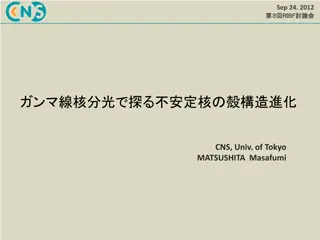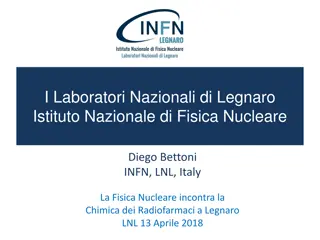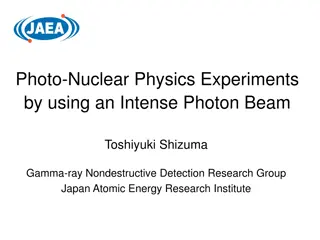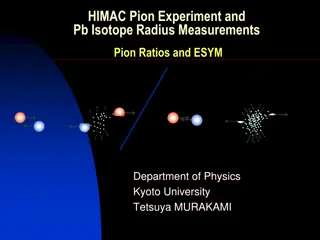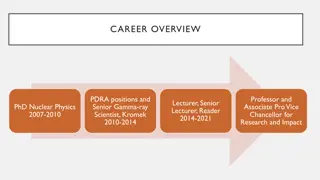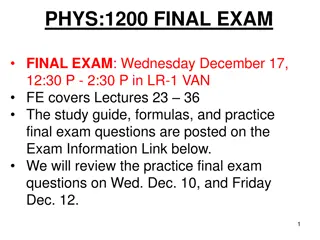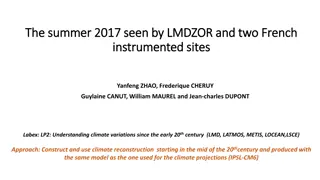Califa Simulations and Experimental Observations in Nuclear Physics Research
Exploring nuclear physics research through Califa simulations and experimental observations with a focus on PID gating, clustering algorithms, beam settings, and Ca isotopes chain gating. The study involves simulating events on CH2 targets, analyzing clustering effects, and observing opening angles for Ca40 simulations. Detailed experimental observations on Ca50 beam settings, energy thresholds, and tracking information for particle detection are discussed. The study emphasizes the need for careful analysis and verification due to low statistics in gating solely on Ca isotopes chain.
Download Presentation

Please find below an Image/Link to download the presentation.
The content on the website is provided AS IS for your information and personal use only. It may not be sold, licensed, or shared on other websites without obtaining consent from the author.If you encounter any issues during the download, it is possible that the publisher has removed the file from their server.
You are allowed to download the files provided on this website for personal or commercial use, subject to the condition that they are used lawfully. All files are the property of their respective owners.
The content on the website is provided AS IS for your information and personal use only. It may not be sold, licensed, or shared on other websites without obtaining consent from the author.
E N D
Presentation Transcript
Califa Simulations for s467 experiment Luke Rose 17/11/2022 1
PID Gating for specific reaction Channel Possibility to also use TPATS to see if that can help with analysis and gating on channels (p,2p) 47K 48Ca TPAT-Trigger PATern: 0: SofStart # Min bias 1:CalifaOR # Reaction 2:NeuLAND # Neutron 3:0 S2L # p+n (Can then Gate on incoming and fragment PID for individual channels) 3
Simulation Simulated 100k Events into califa+CH2 target. First level of data gives hits on detector creating outline of geometry. 4
Simulation Also saw that cluster>2 had sufficient energy Saw that taking care with the clustering algorithm this effect was minimised Cut on Energy>20 MeV for proton cluster. 5
Opening Angle p1 Opening angle for simulation of Ca40 @ 460 AMeV on CH2 target using Califa2020 with modified separation p2 No clustering -> Square Window(0,0) Silly clustering -> Square Window(3,3) 6
Opening Angle p1 Opening angle for simulation of Ca40 @ 460 AMeV on CH2 target using Califa2020 with modified separation p2 Normal Clustering + background subtraction So Signal to background 5.5% at optimal setting and 2.7% at worst silly setting. 7
Experiment Observation - Ca50 Beam Setting on CH2 CE[j] = cluster j energy ETHR = 20 MeV CE[0]>ETHR && CE[1]>ETHR CE[0]>ETHR && CE[1]>ETHR && CE[2]<ETHR Now Gating using tracking information that (p,2p) has occurred (inZ-outZ)=1 8
Now gating solely on Ca isotopes chain Statistics getting very low details need double checking and verifying too see why this happens. 9
Questions? 10




